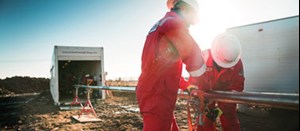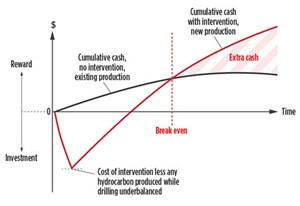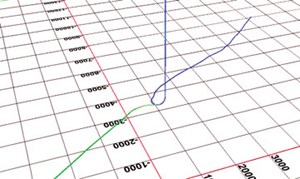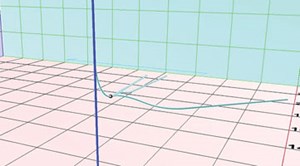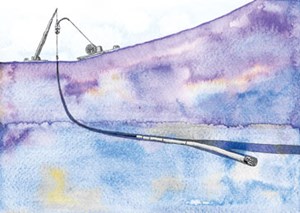Combining several proven drilling technologies makes a compelling value proposition for CTD
Seventy percent of all oil and gas production comes from mature fields. This figure highlights the need for operators to increase the productivity and efficiency of their declining fields, while also minimizing environmental impact and surface footprint. The need becomes even more pressing in a time where market forces are driving down prices.
Much can be gained from looking at small incremental changes that add up to a larger overall benefit. Sometimes there are better gains to be had from looking at bigger solutions and utilizing technologies that are in many cases, still perceived to be at the cutting edge. Taken individually, such technologies offer considerable advantages that can be greater when the technologies are combined. For example, by combining horizontal drilling and underbalanced drilling with coiled tubing (CT) technology, it is possible to drill multi-lateral wells with directional coiled tubing drilling (DCTD), allowing an operator to maximize returns from declining fields. Indeed, when applied correctly, such technologies can reduce costs by as much as 30%, and deliver increased production rates when compared to traditional methods.
These techniques will be examined in isolation, and in combination, to foster understanding of their potential value. The article also will investigate reasons for why these techniques are viewed as niche technologies, as well as ways to mitigate the risks they are perceived as having.
TECHNOLOGIES UNDER CONSIDERATION
Before we look at the risks that need to be mitigated when looking at utilizing advanced drilling techniques, let us take a moment to look at what the technologies are, and the benefits they deliver.
Multi-lateral drilling. The use of multi-lateral drilling has grown substantially since the mid-1990s. It enables improved reservoir production and lessens an operation’s environmental footprint for a minimal increase on drilling and completion costs. This is most noticeable in projects where well cost is traditionally high, such as in many offshore projects, including those in deep water and in the Arctic. The concept builds on horizontal drilling and involves multiple wellbores connected to a single, main bore.
Underbalanced drilling increases well productivity and recovery, reduces drilling problems, such as differential sticking, and removes damage near the wellbore. The technique maintains the pressure in the wellbore at a lower level than the static pressure in the formation being drilled. It is used commonly in conjunction with other advanced techniques that are detailed here. The technique is suitable for most fields, although there are geological, safety and environmental concerns, which may prevent its use in some situations.
Coiled tubing drilling (CTD). Directional coiled tubing drilling is about 20-years-old, but it remains a niche technology in all areas outside of Alaska and Saudi Arabia. It combines coiled tubing and directional drilling, and it allows bottomhole assemblies (BHAs) to drill directional, S-curve and horizontal wells. One advantage of CTD is that the amount of real-time data received from the BHA is significantly higher than what is received on a mud pulse system or on an EM system. This improvement enables directional drillers to optimize on the fly. Using this technique is proven to enable a reduction in drilling time of between 30% and 60%, with a 30% to 40% reduction in cost, compared to conventional jointed-pipe drilling.
UNDERSTANDING THE RISKS
As the figures in the preceding section show, there are some attractive numbers surrounding the use of these technologies. But it begs the question: if they offer such a wealth of gains, then why have they not been adopted immediately and widely, to improve rates of capture from declining fields? In the case of the technologies outlined above, the reason can be stated simply: the propositions seem too risky, thanks to the combination of the high upfront investment that is required, and the complexity involved. However, with the right modeling tools and expertise, both concerns can be overcome.
THE ISSUE OF TOO MUCH COST
There is no doubt that the upfront investment involved in using these advanced technologies—either in isolation or in combination—looks unfavorable at first glance, when compared to the upfront costs involved in a traditional set-up. In many cases, the extent of the cost disparity leads operators to discount the technologies altogether. However, to measure the cost by examining only the upfront investment is to lose sight of the bigger picture, which is the gains to be achieved. To regain perspective, it is important to model the most significant upfront costs, and to project the future potential for revenue on a project. Then, an operator truly can see when an intervention will break even. In doing so, the upfront costs can be put into the context of the potential rewards, enabling a real assessment of the total costs, Fig 1. This graph can be generated by modeling four factors: the production increase that might be expected by drilling a horizontal (i.e. a multi-lateral) well instead of a vertical well; the oil price; the total cost of the intervention; and the decline curve of the well.
Productivity improvement factor. Horizontal wells contact more of the reservoir, so they can create higher productivity in laterally-extensive reservoirs. The added benefit from drilling a horizontal well can be estimated by using the productivity improvement factor (PIF). This compares the initial productivity of a horizontal well to that of a vertical well, in the same reservoir, and during early time flow. The PIF is defined in Equation 1, where L is the length of the reservoir; h is the height of the reservoir; kh is the horizontal permeability of the reservoir; and kv is the vertical permeability of the reservoir.
As a rule of thumb, a PIF of between three and four accounts for the undoubted uncertainties that are involved in drilling a horizontal well. Note that the PIF assumes overbalanced drilling. While it is certainly true that underbalanced drilling (or even at-balance drilling) can greatly increase the rate of production and reduce the drilling time, by assuming overbalanced drilling there is an element of caution built into the calculation.
Oil price. The oil price will always be a best guess, although it is always useful to alter this variable and understand how marginal (or not) an intervention is likely to be on the payback time. Bear in mind that the shorter the payback time, the lower the risk, because there are fewer opportunities for oil price fluctuation.
Total cost of intervention. The total cost of the intervention involves a clear-eyed, rational assessment. Put simply, knowing the maximum amount it would be viable to spend on a well to achieve the desired payback will dictate the technologies that are available. On some older wells, an intervention simply won’t be economically viable. We look at some of the factors that will affect this cost in the next section.
DECLINE CURVE
The decline curve takes into account the fact that all wells decline over time. The precision with which this figure is calculated is not especially important when modeling the numbers. What is important is that the decline is considered in order to avoid over-optimistic projections. A decline curve that reduces production to a certain percentage after the first year will provide the necessary insight; known field data might provide greater reassurance, as to the realism of the numbers.
This modeling provides a way to understand the high, initial investment against likely returns, thereby setting the investment in context and giving it greater appeal. Now let us turn to the other concern with investment in newer technologies.
THE ISSUE OF COMPLEXITY
The complexity of the operation is a vital element in understanding the total cost of intervention and, therefore, the viability of using advanced drilling techniques. However, once it has been confirmed that the upfront costs are worth it, when compared to the potential rewards, getting to grips with the complexity becomes much more appealing as an integral part of an important gain.
The total cost of the intervention is inextricably linked to characteristics of the reservoir: for example, horizontal and vertical permeability, the geological structure, and the geosteering requirements will all need to be taken into account. When it comes to the design of the well, the drilling, engineering and subsurface teams need to work together to develop the optimum path and the knowledge and experience of external consultants and service providers also can provide valuable input.
Early on, clarifying the objective for the multi-laterals, by choosing the wellbore path, helps to reduce the number of iterations required in the design of the trajectories, ultimately saving time and costs. Despite the seemingly myriad number of options, the choice of wellbore path typically ends up being a choice between stacked laterals and forked laterals, Fig. 2 and 3. Stacked laterals offer a way to access different layers of a laminated reservoir. Forked laterals are used most commonly to increase reservoir contact in a specific formation.
Once the trajectories have been drafted, the next step is to model the wells, to ensure that they are drillable, and specify surface equipment. For example, to specify the elements for a CTD section, the principle considerations are the available weight-on-bit, CT lock-up limit, hole cleaning and surface pressures. Production and geomechanical models ensure that the separation equipment is suitably specified, and that the amount of underbalance applied to the wellbore does not cause stability issues.
The sidetracks—the additional well paths from the motherbore—also need to be considered. There are two main categories of sidetracking a well: cased-hole sidetracks and open-hole sidetracks. Cased-hole sidetracks can be carried out with a whipstock and a window milled in the casing, which is quicker and cheaper than section milling. Multiple whipstocks can be set in the motherbore and retrieved, if required. For open-hole sidetracks, the BHA is used to create a trough in an inclined section of the wellbore, Fig. 4. Once the trough is initiated, the weight-on-bit can be increased to continue the hole section. Also, an open-hole sidetrack can be initiated off a cement plug, or an aluminium billet, with special procedures.
Once drilling commences, the first requirement of a successful multi-lateral is that the laterals be drilled into the target zones. This is one of the few areas where the options appear limited, when compared to a conventional logging-while-drilling service. Gamma ray and resistivity are potential options. Also, a bio-stratigraphy service can be used to identify changing formations. However, a significant amount of the information needed is provided by the underbalanced drilling package—it can be used for both geosteering and also for reservoir characterization while drilling. Indeed, the large amount of additional information that can be gathered from the real-time downhole sensors and the underbalanced drilling package, if used correctly as part of an integrated data acquisition and reservoir evaluation strategy, can remove the need for expensive logging-while-drilling tools or wireline logs.
Not every well will be a candidate for advanced drilling techniques, and every project CTD must be modeled and analyzed to ensure that the well can be drilled successfully, as we have seen in this article. Generally, the feasibility calculations for a well are too complicated to do by hand, so specialist software is employed to predict tubing forces and the ability to clean the hole of drill cuttings. It is also important to note that CTD is exceptionally good at drilling through depleted reservoirs, but it is not a general-purpose drilling technique. This is due partly to the small sizes of hole that can be drilled, typically not above 81/2-in., and partly because the feature that makes CT so good for underbalanced drilling—continuous pipe—means that it cannot be rotated easily.
This limits the scope to manipulate the string in stuck pipe conditions, and the reach that can be achieved in horizontal applications. Some difficult drilling applications can be tackled with CT, such as formations susceptible to lost circulation problems, which can cause differential sticking. However, generally, larger hole sizes and trajectories that involve drilling through multiple, challenging formations are best-drilled with regular, jointed pipe.
SEEING THE THEORY IN ACTION
In this example, the operator had a horizontal drilling program, but problems meant that the project was exceeding its budget. In the formation being drilled, up to 1,000 bbl of drilling fluid could be lost in a 12-hr period, which had to be produced before the well started producing. The objective was to reduce the losses, decrease the risk of differential sticking, and cut back the time taken to bring the well on production once drilling was complete.
CTD was investigated as a way to solve the severe lost circulation problems that the operator was having when drilling wells conventionally. The initial production capability of the wells was around 1,000 bpd and with an oil price of $50/bbl, the payback needed to be around six months, so the operator determined that well cost needed to be kept below $2.2 million, to achieve the result required. Underbalanced CTD proved to be suitable, because it reduced the risk of lost circulation problems and, therefore, reduced the uncertainties of the project.
CONCLUSION
As the example shows, DCTD offers compelling opportunities to re-enter wells in declining fields with low-producing wells. However, once a viable target has been identified, careful planning and intelligent design allow projected rewards to become realized.
Advanced drilling technologies may seem risky and complex, but in truth, they simply reflect the way that an industry develops and matures. Consider the move in the last century from cable tools to rotary drilling. In more recent times, consider the move to horizontal drilling. All new techniques start life seeming unlikely and risky, but inevitably, many will become the industry’s accepted technology. The most important thing is to embrace the modern trends, to avoid getting left behind. ![]()
- Coiled tubing drilling’s role in the energy transition (March 2024)
- Shale technology: Bayesian variable pressure decline-curve analysis for shale gas wells (March 2024)
- Digital tool kit enhances real-time decision-making to improve drilling efficiency and performance (February 2024)
- E&P outside the U.S. maintains a disciplined pace (February 2024)
- U.S. operators reduce activity as crude prices plunge (February 2024)
- Drilling advances (January 2024)

